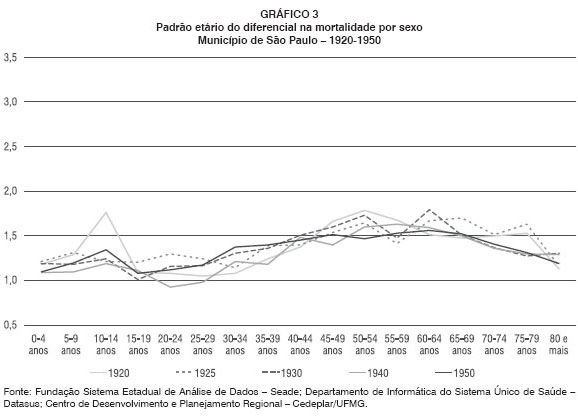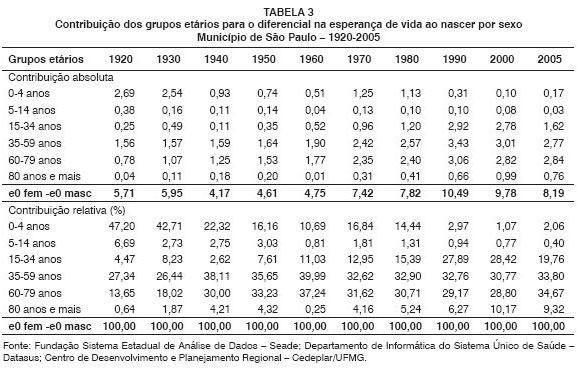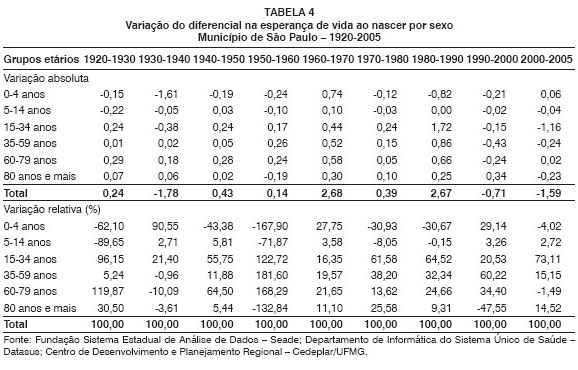The aim of this study is to systematically analyze levels and patterns of sex differential in mortality rates in the city of São Paulo for a period of 85 years (1920-2005). Three indicators are used: the hiatus in life expectancy at birth; ratio between sexes among specific mortality rates by age; contribution of different ages in the hiatus in life expectancy at birth, based on the method of decomposing difference of life expectancy at birth proposed by the UN (1982). Generally, period trends observed in the city of São Paulo are similar to those found in developed countries, with some specificities. There is a temporal gap of 30 to 50 years in the long-term trend in the sex differential in mortality rate. The onset of the transition from age group to sex diferential was late, but it has become similar to developed countries more recently. Moreover, the analysis of different age contribution to the life expectancy at birth hiatus indicates that the decrease in the differential of the last five years is explained mainly by the decrease in male mortality at young ages. The decrease in death risk among adults and the elderly has also contributed to a significant percentage (about 30%) of the decrease in sex differential in mortality rates in this period. Thus, the results here shown suggest that the future behavior of sex differential in mortality rates will depend greatly on the heterogeneity of the death risk in advanced ages.
Sex differential in mortality rate; Decomposition; City of São Paulo













